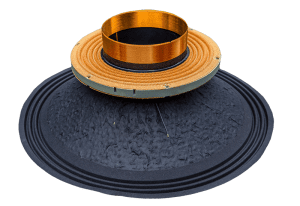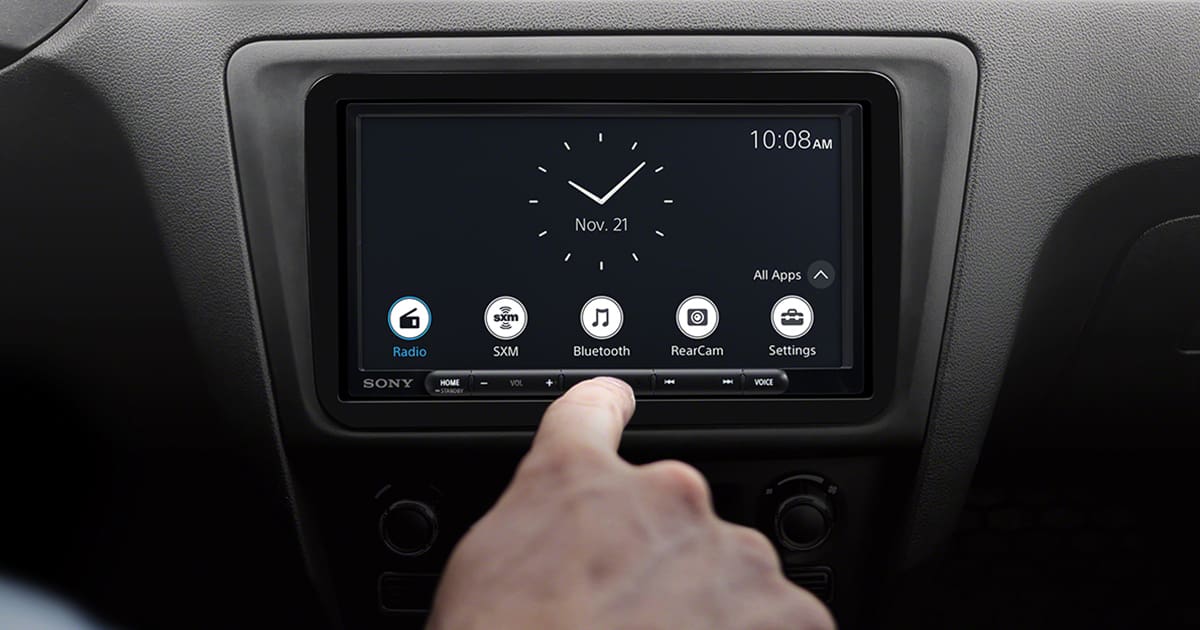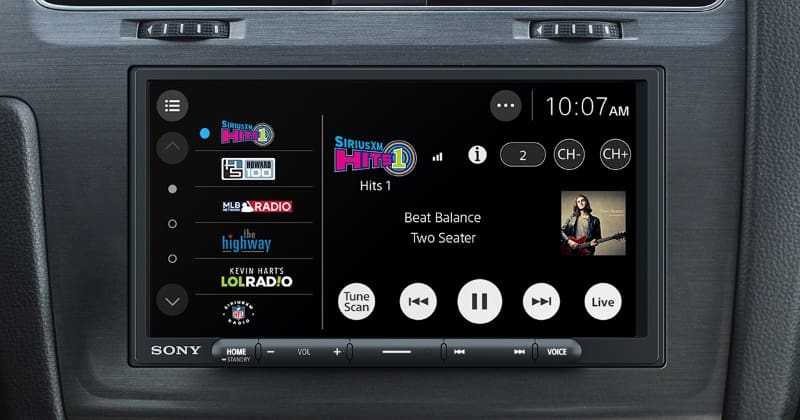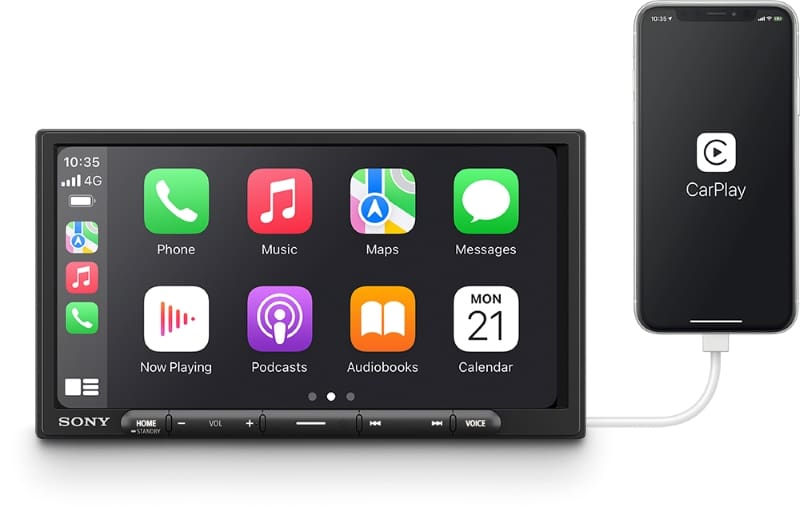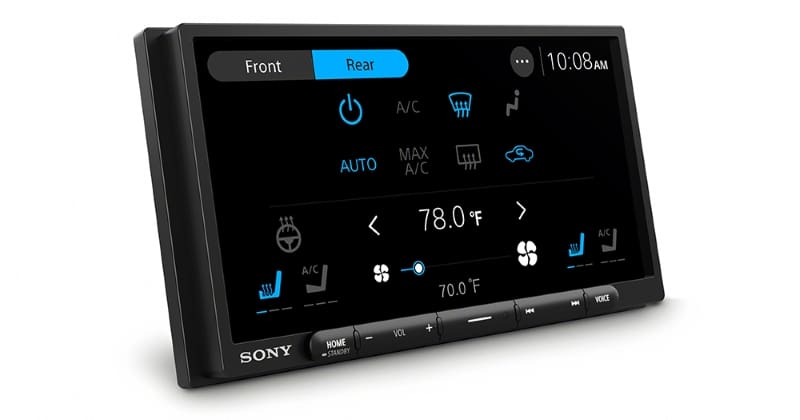 In the ’80s, ’90s and early part of the 2000s, upgrading the car stereo system in your vehicle was a relatively simple process. You’d start by picking out a new radio that offered the features you wanted and add a set of speakers to improve the sound of the system. Pretty much anyone with a basic understanding of electrical systems could use a wire harness adapter to install the radio, and the speaker installation was usually a drop-in upgrade, save for having to crimp on some spade connectors.
In the ’80s, ’90s and early part of the 2000s, upgrading the car stereo system in your vehicle was a relatively simple process. You’d start by picking out a new radio that offered the features you wanted and add a set of speakers to improve the sound of the system. Pretty much anyone with a basic understanding of electrical systems could use a wire harness adapter to install the radio, and the speaker installation was usually a drop-in upgrade, save for having to crimp on some spade connectors.
The Reality of Modern Car Audio
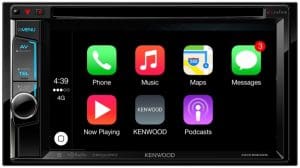 Fast-forward to 2010 and beyond, and the world of car audio has changed dramatically. Even the most basic of new cars and trucks include Bluetooth hands-free calling and audio streaming technologies, and most will play your MP3 digital audio files from a USB stick. For many people, the only reason to want to upgrade their vehicle is to add a smartphone integration technology like Android Auto or Apple CarPlay.
Fast-forward to 2010 and beyond, and the world of car audio has changed dramatically. Even the most basic of new cars and trucks include Bluetooth hands-free calling and audio streaming technologies, and most will play your MP3 digital audio files from a USB stick. For many people, the only reason to want to upgrade their vehicle is to add a smartphone integration technology like Android Auto or Apple CarPlay.
When it comes to the sound of modern stereo systems, there is still room for improvement. Basic audio systems can still benefit from upgraded speakers, and most vehicles could use a high-quality subwoofer upgrade. The problem with modern sound systems is that the companies like Bose and Harman (the people behind JBL, Infinity, Mark Levinson and Lexicon) are pretty good at what they do. They use powerful digital signal processors to optimize the amplifiers that power these systems to make the most of the speakers in the car. If you upgrade to new speakers, the processing that made cheap speakers sound OK can make your good speakers sound mediocre. In essence, the days of going to a stereo shop to buy a new set of speakers to upgrade the sound in your car are gone.
How Stereo Shops Handle Stereo Upgrades
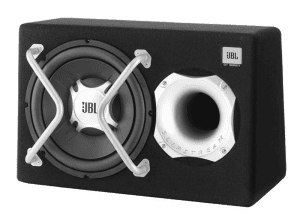 When you take your new car to a shop for a sound system upgrade, there are a few steps required to ensure you will get the performance you want from the system. The first should be a series of questions from the salesperson about how you enjoy your music. Do you listen at high volume levels? Do you like lots of bass? Some will ask you what kind of music you listen to to help understand your goals for your audio system. For the truly dedicated, the questions should include a query about what you hope to improve by upgrading the system. A visit to your vehicle can often provide valuable insight into what’s missing. If you have the bass turned up on the factory radio, you may benefit from a subwoofer. If you have boosted high frequencies, a speaker upgrade may be in order.
When you take your new car to a shop for a sound system upgrade, there are a few steps required to ensure you will get the performance you want from the system. The first should be a series of questions from the salesperson about how you enjoy your music. Do you listen at high volume levels? Do you like lots of bass? Some will ask you what kind of music you listen to to help understand your goals for your audio system. For the truly dedicated, the questions should include a query about what you hope to improve by upgrading the system. A visit to your vehicle can often provide valuable insight into what’s missing. If you have the bass turned up on the factory radio, you may benefit from a subwoofer. If you have boosted high frequencies, a speaker upgrade may be in order.
Your job is to let them know what you have, and what you want. Their job is to determine how to achieve that goal.
Understanding Your Stereo System
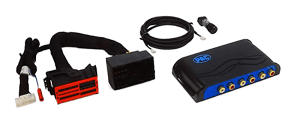 Where the expertise of a mobile electronics specialist retailer shines is in knowing how your factory stereo works and, subsequently, how to upgrade it. Remember the signal processing we talked about at the beginning of the article? If a shop sells you a new set of speakers without addressing this tuning, you may not like the results. There are three options available to deal with this processing. If you can, a new radio and potentially a new amplifier will eliminate the tuning. Audio interfaces include the PAC AmpPRO, iDatalink AR, Axxess AX-DSP or one of the many ZEN-Audio solutions from Nav-TV. Finally, you can add an amplifier with a digital signal processor to correct the tuning for the new speakers. There’s no “best” answer to your upgrade needs, as each vehicle and client’s goals differ.
Where the expertise of a mobile electronics specialist retailer shines is in knowing how your factory stereo works and, subsequently, how to upgrade it. Remember the signal processing we talked about at the beginning of the article? If a shop sells you a new set of speakers without addressing this tuning, you may not like the results. There are three options available to deal with this processing. If you can, a new radio and potentially a new amplifier will eliminate the tuning. Audio interfaces include the PAC AmpPRO, iDatalink AR, Axxess AX-DSP or one of the many ZEN-Audio solutions from Nav-TV. Finally, you can add an amplifier with a digital signal processor to correct the tuning for the new speakers. There’s no “best” answer to your upgrade needs, as each vehicle and client’s goals differ.
The Importance of Signal Processing
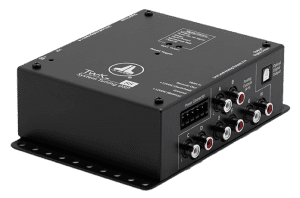 Before you balk at the cost of adding a DSP and amp to your factory stereo, keep in mind that the vehicle manufacturer and its audio system supplier used this very process for making the speakers in your car perform as well as they did.
Before you balk at the cost of adding a DSP and amp to your factory stereo, keep in mind that the vehicle manufacturer and its audio system supplier used this very process for making the speakers in your car perform as well as they did.
System tuning is a critical part of any installation. It can be as basic as setting the crossovers and sensitivity controls on an amp to configuring crossovers, equalization settings and signal delay on a DSP. In either case, an acoustic analyzer can give the installation technician valuable insights to produce a predictable result.
Coping with Sticker Shock
Let’s go back to the late ’90s and work out the speaker upgrade costs. You might have a budget of $200 for a nice set of components for your doors. The shop would likely charge one to two hours to install the speakers, depending on the complexity of the vehicle. In ’90s labor rates, you’d likely be out the door for around $400, including shop supplies and whatever taxes applied in your state or province.
Dealing with a new car is a different story. You can maintain your $200 speaker budget if you want, and chances are, labor rates have increased a little. The basic speaker upgrade and speaker installation is now going to run around $450 to $500. Not too bad, right?
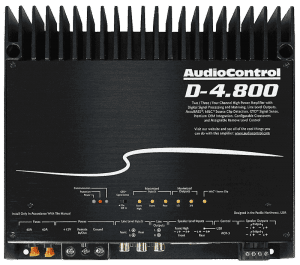 Let’s look at how we handle the tuning in the vehicle. You’ll need an amplifier with a built-in DSP. There are lots of compact solutions available from companies like JL Audio, Mosconi, Helix, Audison, AudioControl, Sony, Alpine and Kicker. A suitable amp will run anywhere from $600 to over $1,000, depending on the features, power capabilities and quality of the unit. Add in speaker wire and power wire for another hundred or so. Depending on how your factory audio system works, you may need one of those vehicle interfaces we talked about. They cost between $250 to almost $1,300 for some of the complex MOST150 interfaces for Mercedes-Benz vehicles.
Let’s look at how we handle the tuning in the vehicle. You’ll need an amplifier with a built-in DSP. There are lots of compact solutions available from companies like JL Audio, Mosconi, Helix, Audison, AudioControl, Sony, Alpine and Kicker. A suitable amp will run anywhere from $600 to over $1,000, depending on the features, power capabilities and quality of the unit. Add in speaker wire and power wire for another hundred or so. Depending on how your factory audio system works, you may need one of those vehicle interfaces we talked about. They cost between $250 to almost $1,300 for some of the complex MOST150 interfaces for Mercedes-Benz vehicles.
Needless to say, attempting to upgrade one of these premium sound systems is, in fact, opening a moderately expensive can of worms. On the low side, you’ll be $1,500 and exceeding $4,000 wouldn’t take long.
Is the Upgrade Worth It?
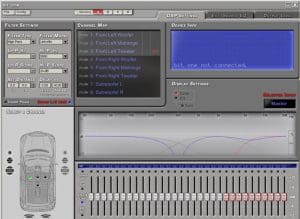 Take a deep breath. Talking about spending thousands of dollars on a speaker upgrade might scare a lot of people. The question is, are the upgrades worthwhile? When executed by a properly trained technician, the answer is unquestionably yes! Not only will new speakers play louder, they produce less distortion to make your music clearer and more detailed. The signal processor can be used to fine-tune the system to provide the overall sound balance you want. Most people enjoy smooth and natural midrange with some accentuation in the midbass region and a little more in the bass region. Your technician can fine-tune the high-frequency response of the system to your preferences and the kind of music you enjoy.
Take a deep breath. Talking about spending thousands of dollars on a speaker upgrade might scare a lot of people. The question is, are the upgrades worthwhile? When executed by a properly trained technician, the answer is unquestionably yes! Not only will new speakers play louder, they produce less distortion to make your music clearer and more detailed. The signal processor can be used to fine-tune the system to provide the overall sound balance you want. Most people enjoy smooth and natural midrange with some accentuation in the midbass region and a little more in the bass region. Your technician can fine-tune the high-frequency response of the system to your preferences and the kind of music you enjoy.
Think of upgrading your stereo like buying a new suit or a dress. You can walk into a store and pick something off the rack. It will fit and do its job, but it might not be perfect in every area. The alternative is to commission someone to create a garment specifically for your needs and the occasion. They’ll measure you, discuss fabric options and consult on the overall design. You end up with something that is exactly what you want and is a joy to wear.
An upgraded audio system is the same. We’ve heard countless stories of clients who enjoy spending time in their vehicle so much, they find themselves looking for excuses to go for a drive. Hearing your music on a reference-quality sound system is indeed like hearing it for the first time. New sounds, new voices and amazing realism are just the starting point. To experience a taste of just how great a mobile audio system can sound, drop by your local car audio specialist retailer and ask to listen to one of their demo vehicles or displays.
This article is written and produced by the team at www.BestCarAudio.com. Reproduction or use of any kind is prohibited without the express written permission of 1sixty8 media.
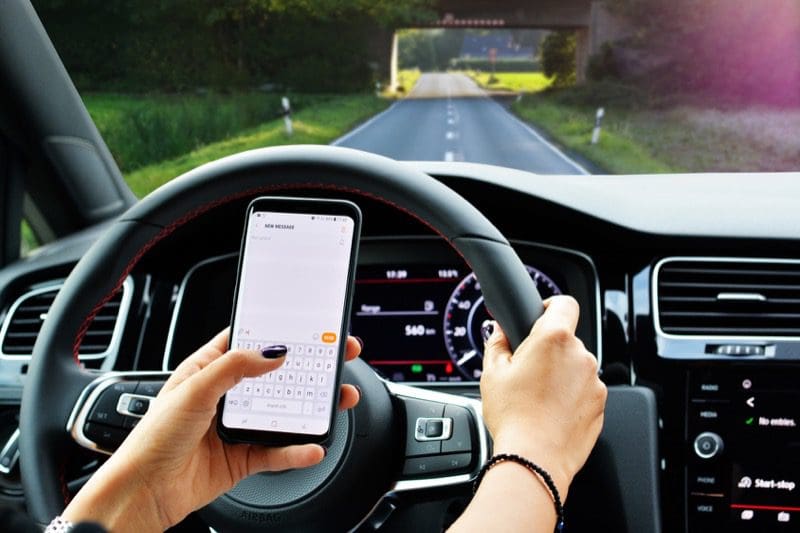 In 1982, Michael Knight was able to talk to his 1982 Pontiac Firebird and ask it for navigation directions. Of course, watching “Knight Rider” meant that we understood that KITT was make-believe. Fast-forward 35 years, and talking to our vehicles is now a reality, thanks to our
In 1982, Michael Knight was able to talk to his 1982 Pontiac Firebird and ask it for navigation directions. Of course, watching “Knight Rider” meant that we understood that KITT was make-believe. Fast-forward 35 years, and talking to our vehicles is now a reality, thanks to our 
 Long before we had to worry about looking at maps on our phones, we had to deal with the issue of people talking on their phones while driving. Distracted driving is a serious issue and is the cause of many accidents and fatalities. In 2013, more than 3,000 people were killed because of distracted driving. In 2015, more than 391,000 injuries were caused by driver distraction.
Long before we had to worry about looking at maps on our phones, we had to deal with the issue of people talking on their phones while driving. Distracted driving is a serious issue and is the cause of many accidents and fatalities. In 2013, more than 3,000 people were killed because of distracted driving. In 2015, more than 391,000 injuries were caused by driver distraction. We started talking about asking our phones for directions. Portable
We started talking about asking our phones for directions. Portable  Unlike the voice recognition system built into portable navigation devices that listened for specific phrases or requests, Apple’s Siri and Google’s Voice Assistant can interpret common language communication to perform commands or execute requests. “Navigate to” has been replaced with “find me a,” “take me to” or “get directions to” whatever address or location you want. These systems capture what you say, analyze the content on their servers, then send the required commands back to the phone.
Unlike the voice recognition system built into portable navigation devices that listened for specific phrases or requests, Apple’s Siri and Google’s Voice Assistant can interpret common language communication to perform commands or execute requests. “Navigate to” has been replaced with “find me a,” “take me to” or “get directions to” whatever address or location you want. These systems capture what you say, analyze the content on their servers, then send the required commands back to the phone. Apple CarPlay and Android
Apple CarPlay and Android  Automakers are working to allow our vehicles to talk to each other in order to reduce traffic congestion and the chance of accidents. For this to happen, your car or truck needs to know where all the vehicles around it are located and where they are going. The hardware exists today to make this happen, but the communication networks aren’t fast enough to implement the system.
Automakers are working to allow our vehicles to talk to each other in order to reduce traffic congestion and the chance of accidents. For this to happen, your car or truck needs to know where all the vehicles around it are located and where they are going. The hardware exists today to make this happen, but the communication networks aren’t fast enough to implement the system.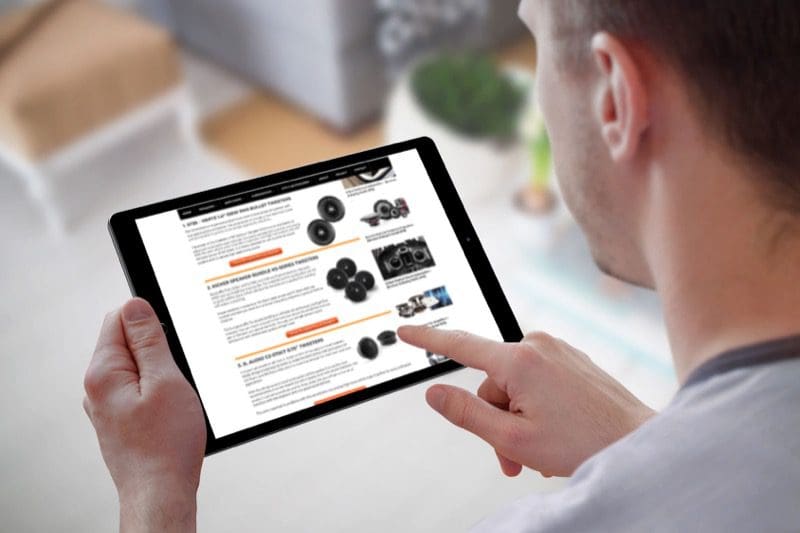 Not too long ago, we saw a discussion about an article called “The 12 Best Tweeters (Reviews & Ultimate Buying Guide 2018).” Being curious, we decided to check the article out to see what criteria they used to choose the products and how they tested them. Much to our dismay, there were no criteria, nor was there any testing or a simple performance review. So, what was going on? Read on and we’ll explain why you should be wary of Top 10 lists.
Not too long ago, we saw a discussion about an article called “The 12 Best Tweeters (Reviews & Ultimate Buying Guide 2018).” Being curious, we decided to check the article out to see what criteria they used to choose the products and how they tested them. Much to our dismay, there were no criteria, nor was there any testing or a simple performance review. So, what was going on? Read on and we’ll explain why you should be wary of Top 10 lists.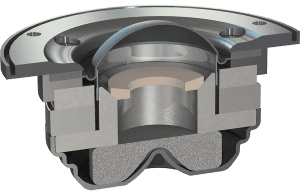 In a formal product review, the goal is to explain the features and benefits of a product. In the case of a tweeter, a review would include a detailed explanation of the product design, an explanation of the materials used to build the device, lab-based measurements of the output and a listening test. Of course, a summary of the key benefits and drawbacks of the design would give readers the opportunity to decide for themselves, based on their application and budget, if that product was suitable for their application.
In a formal product review, the goal is to explain the features and benefits of a product. In the case of a tweeter, a review would include a detailed explanation of the product design, an explanation of the materials used to build the device, lab-based measurements of the output and a listening test. Of course, a summary of the key benefits and drawbacks of the design would give readers the opportunity to decide for themselves, based on their application and budget, if that product was suitable for their application. The formal definition of clickbait is content or a title that encourages visitors to click on a link to a particular page or video. A few examples would be “How to get free beer” or “You won’t believe how great these speakers sound.”
The formal definition of clickbait is content or a title that encourages visitors to click on a link to a particular page or video. A few examples would be “How to get free beer” or “You won’t believe how great these speakers sound.” Now that you know what should be in a product review, or in this case, a product comparison, and clearly, that hasn’t been provided, why did they go to all the trouble of making the website and the article? The answer is to make money. You see, each product includes a link to “check the latest price on Amazon.” If you hover your mouse over the link, you’ll see that the website name is included as a tag in the link. This is called an associate link. If you follow the link and purchase the product, the website that provided the link gets a kickback from Amazon. Depending on the category, the kickback can be anywhere from 1 percent to 10 percent of the selling price. In terms of the website making money, it’s well worth the effort.
Now that you know what should be in a product review, or in this case, a product comparison, and clearly, that hasn’t been provided, why did they go to all the trouble of making the website and the article? The answer is to make money. You see, each product includes a link to “check the latest price on Amazon.” If you hover your mouse over the link, you’ll see that the website name is included as a tag in the link. This is called an associate link. If you follow the link and purchase the product, the website that provided the link gets a kickback from Amazon. Depending on the category, the kickback can be anywhere from 1 percent to 10 percent of the selling price. In terms of the website making money, it’s well worth the effort.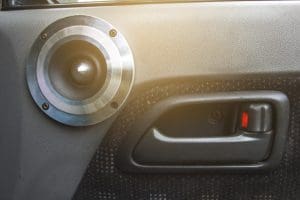 When it comes to helping you choose the best possible products for your
When it comes to helping you choose the best possible products for your  As we move toward the end of our discussion of car audio electrical theory, we need to talk about capacitance and inductance and how the characteristics of those phenomena interact with AC and DC signals. There’s no doubt that these are advanced concepts, but even a basic understanding of how capacitors and inductors work is fundamental to a thorough understanding of
As we move toward the end of our discussion of car audio electrical theory, we need to talk about capacitance and inductance and how the characteristics of those phenomena interact with AC and DC signals. There’s no doubt that these are advanced concepts, but even a basic understanding of how capacitors and inductors work is fundamental to a thorough understanding of 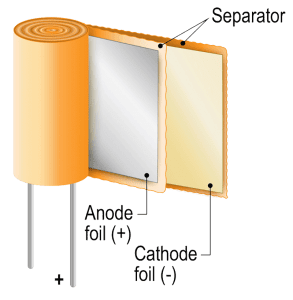 A capacitor is a two-terminal electronic component that stores energy. Capacitors are made of two metallic plates that are separated by an electrical insulator. When we apply a voltage to one terminal of the capacitor, the electrons on one plate will impose a force on the opposite plate to create an opposite charge. The result is that the plates have equal and opposite charges and thus, maintain an electric field. Because the plates in a capacitor are very close together, they can store a large amount of energy for their overall size.
A capacitor is a two-terminal electronic component that stores energy. Capacitors are made of two metallic plates that are separated by an electrical insulator. When we apply a voltage to one terminal of the capacitor, the electrons on one plate will impose a force on the opposite plate to create an opposite charge. The result is that the plates have equal and opposite charges and thus, maintain an electric field. Because the plates in a capacitor are very close together, they can store a large amount of energy for their overall size.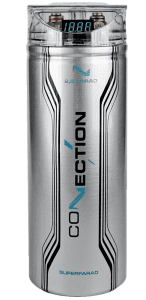 Capacitors are, at their most basic function, a device that stores a microscopic magnetic field between its plates. When we apply a DC voltage to a discharged capacitor, it appears as a short circuit for an instant as the magnetic and electric fields start to form between its plates. As the capacitor starts to store energy, it increases in effective resistance, and the amount of current flowing through the device is reduced. Once the capacitor has equalized with the supply voltage, almost no current passes through the device.
Capacitors are, at their most basic function, a device that stores a microscopic magnetic field between its plates. When we apply a DC voltage to a discharged capacitor, it appears as a short circuit for an instant as the magnetic and electric fields start to form between its plates. As the capacitor starts to store energy, it increases in effective resistance, and the amount of current flowing through the device is reduced. Once the capacitor has equalized with the supply voltage, almost no current passes through the device.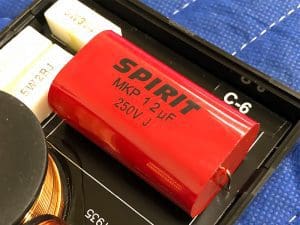 In alternating current circuits, capacitors take on an interesting phenomenon of “virtual resistance.” As we know, capacitors don’t like to change voltage, yet an AC signal is one that is defined as ever-changing. Depending on the relationship between the capacitor value and the frequency of the AC signal, some amount of the current is allowed to pass through the cap.
In alternating current circuits, capacitors take on an interesting phenomenon of “virtual resistance.” As we know, capacitors don’t like to change voltage, yet an AC signal is one that is defined as ever-changing. Depending on the relationship between the capacitor value and the frequency of the AC signal, some amount of the current is allowed to pass through the cap.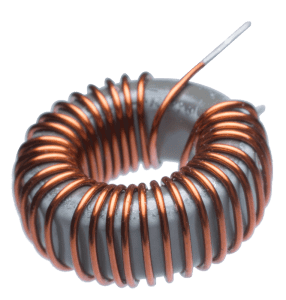 In the simplest of terms, an inductor is a coil of wire that creates a magnetic field based on the amount of current flowing through it. Many inductors feature iron cores to increase the intensity of the magnetic field. Where a capacitor resists changes in voltage, an inductor resists changes in current flow. We know from our previous article on magnetism that current flowing through a conductor creates a magnetic field around that conductor. If we wrap the conductor in a loop, the proximity of the loops to one another intensifies the magnetic field.
In the simplest of terms, an inductor is a coil of wire that creates a magnetic field based on the amount of current flowing through it. Many inductors feature iron cores to increase the intensity of the magnetic field. Where a capacitor resists changes in voltage, an inductor resists changes in current flow. We know from our previous article on magnetism that current flowing through a conductor creates a magnetic field around that conductor. If we wrap the conductor in a loop, the proximity of the loops to one another intensifies the magnetic field.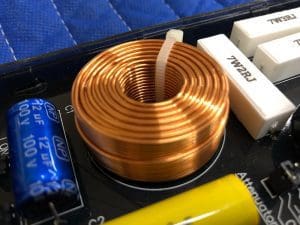 In most applications, we don’t want inductors in a 12V DC circuit because they resist changes in current flow. For a variable load such as an amplifier, a large amount of inductance in the supply wiring would result in an unstable supply voltage as the current requirements change.
In most applications, we don’t want inductors in a 12V DC circuit because they resist changes in current flow. For a variable load such as an amplifier, a large amount of inductance in the supply wiring would result in an unstable supply voltage as the current requirements change.